Abstract
Under well-watered conditions, chlorenchyma acidity in cladodes of Opuntia ficus-indica increased substantially at night, fully accounting for the 0.26-megapascal nocturnal increase in osmotic pressure in the outer 2 millimeters. Osmotic pressure in the inner part of the chlorenchyma and in the water-storage parenchyma did not change significantly over 24-hour periods. Three months of drought decreased nocturnal acid accumulation by 73% and essentially abolished transpiration; also, 27% of the chlorenchyma water and 61% of the parenchyma water was lost during such drought, but the average tissue osmotic pressure was little affected. Turgor pressure was maintained in the chlorenchyma after 3 months of drought, although it decreased sevenfold in the water-storage parenchyma compared with the well-watered condition. Moreover, the nocturnal increases in turgor pressure of about 0.08 megapascal in the outer part of the chlorenchyma was also unchanged by such drought. The water potential magnitudes favored water movement from the parenchyma to the chlorenchyma at the end of the night and in the reverse direction during the late afternoon. Experiments with tritiated water support this pattern of water movement, which is also in agreement with predictions based on electric-circuit analog models for Crassulacean acid metabolism plants.
Full text
PDF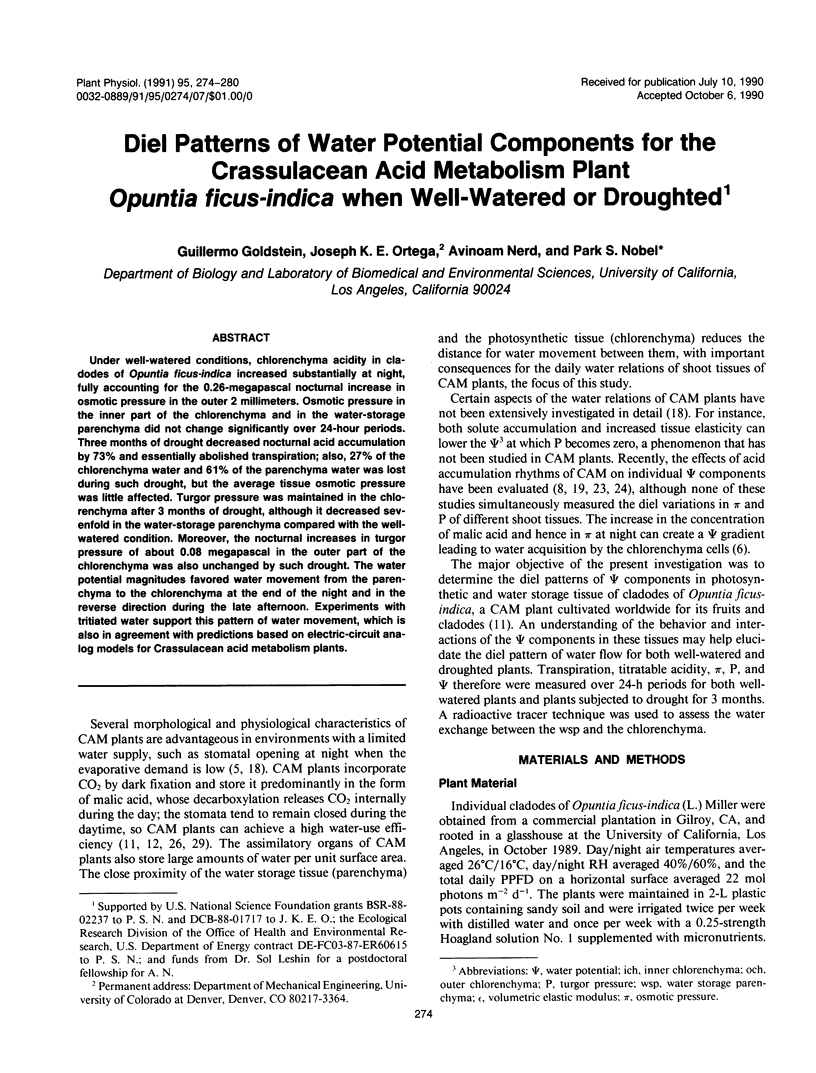
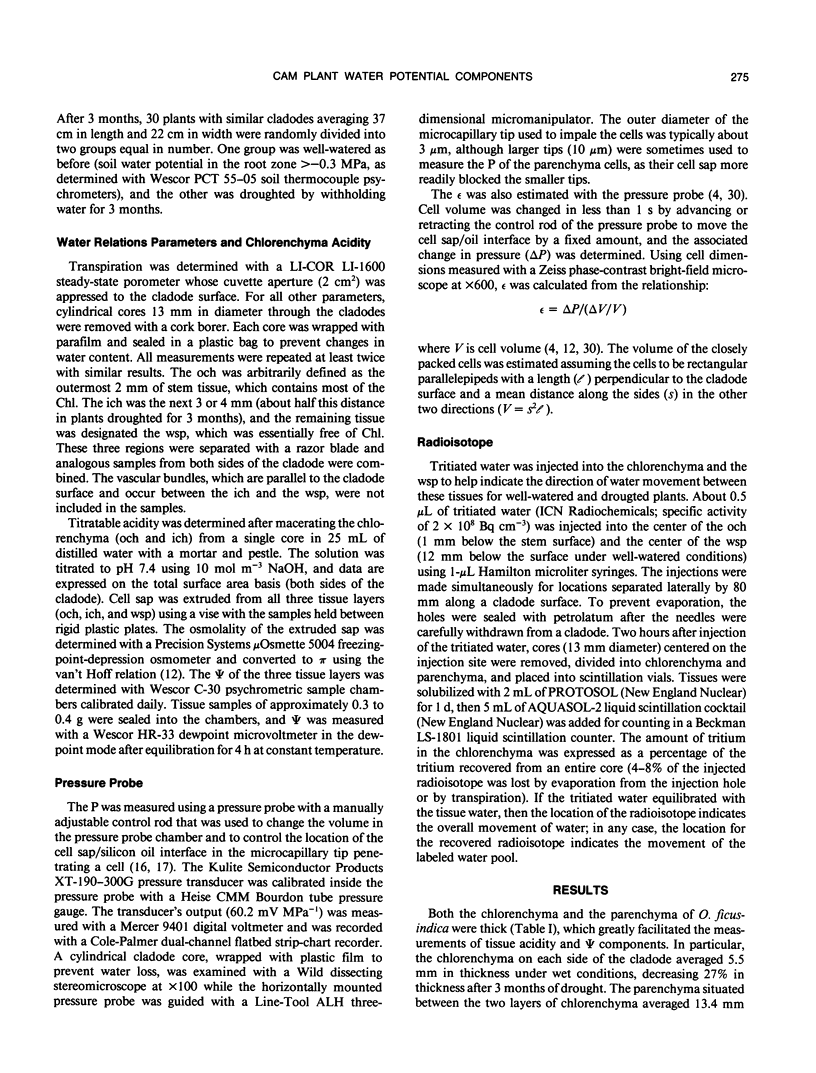
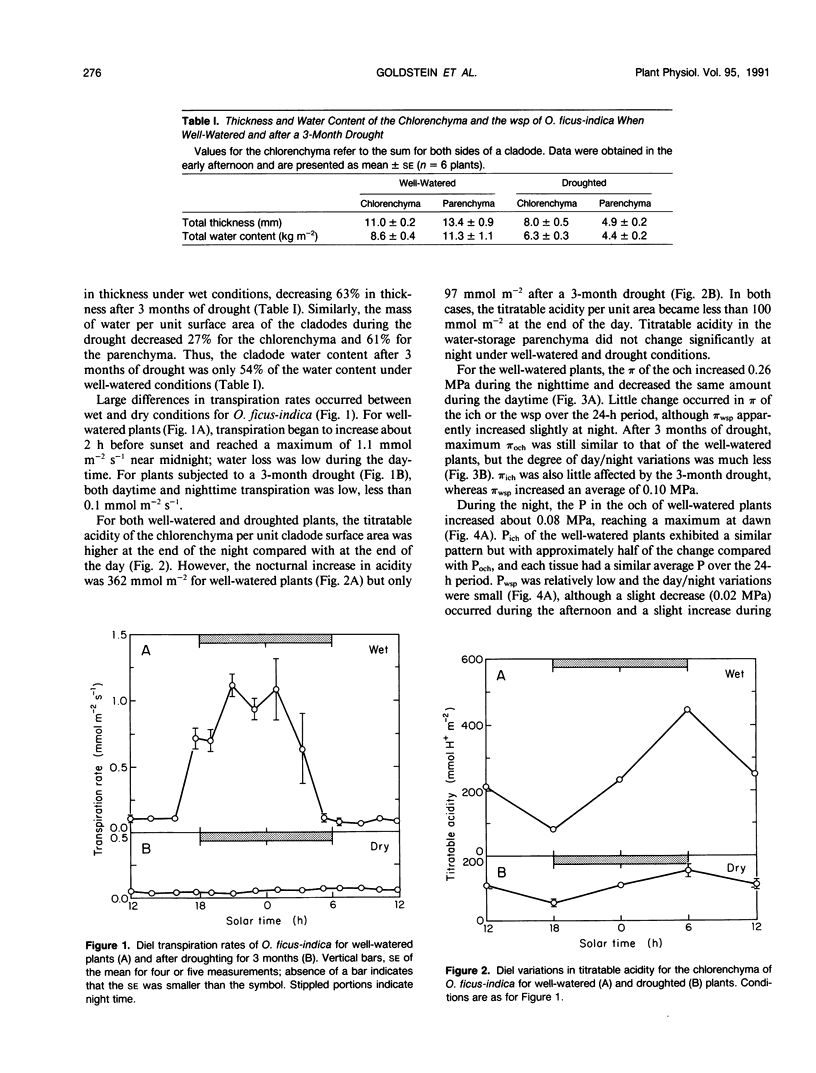
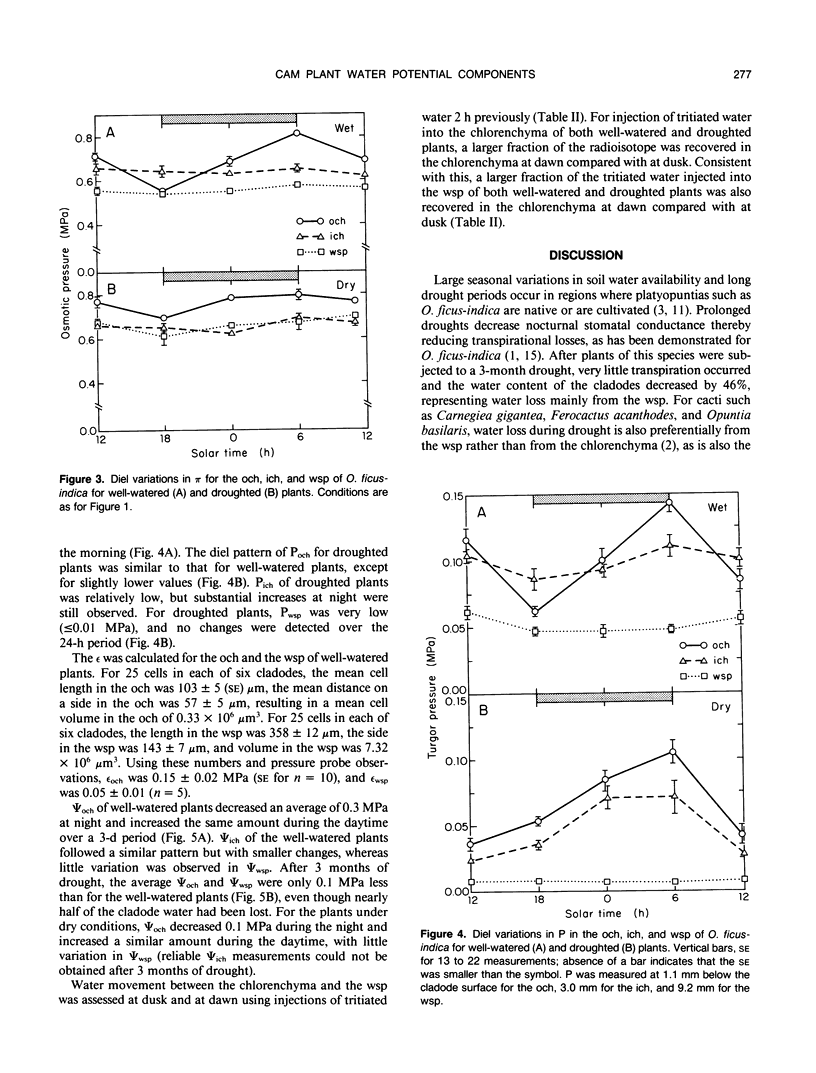
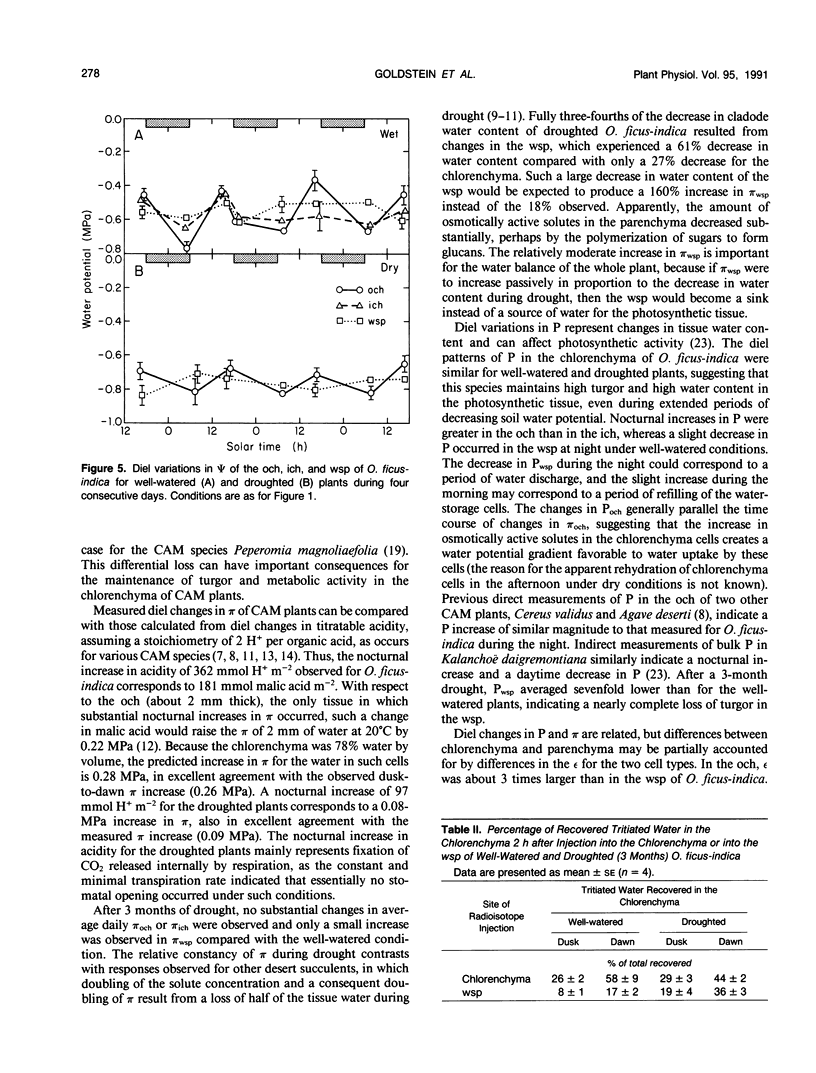
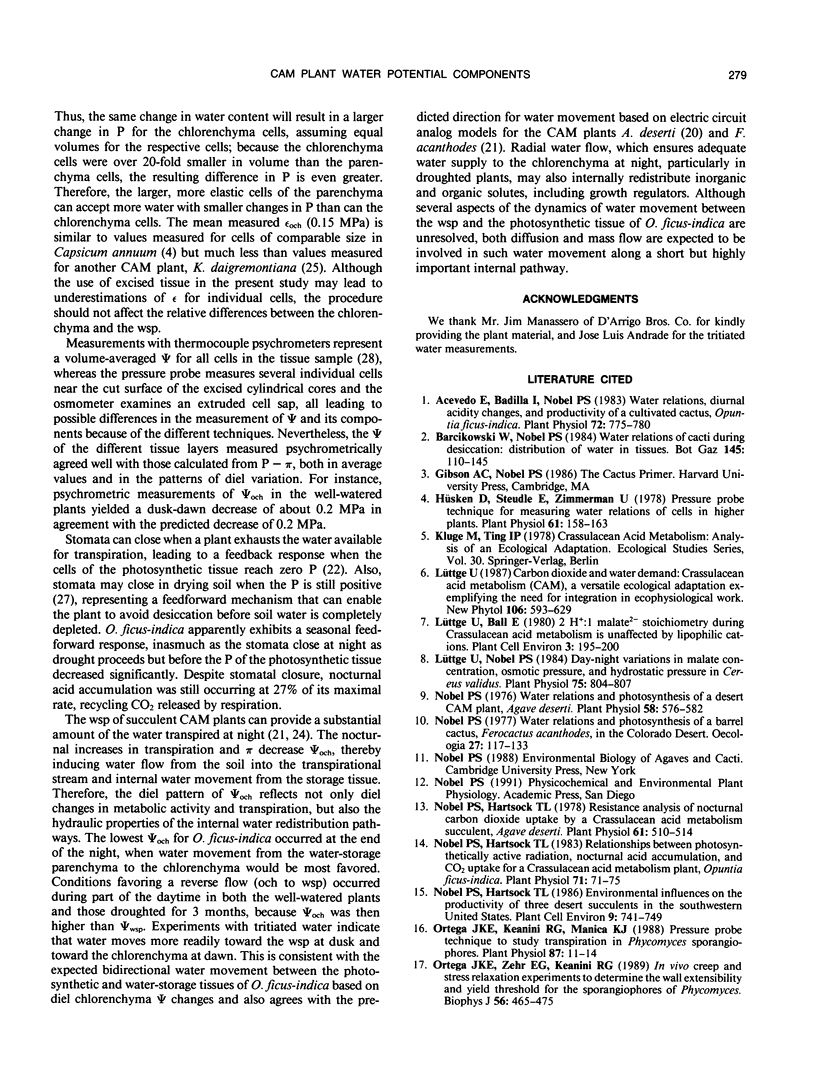
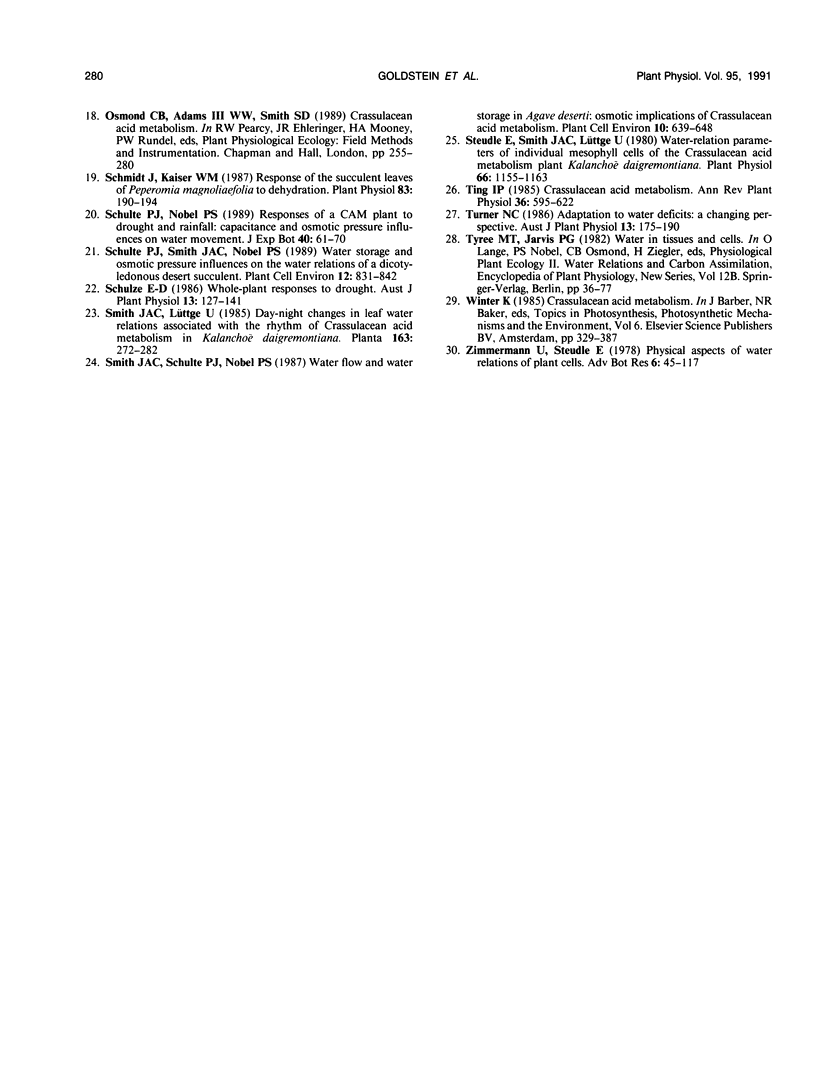
Selected References
These references are in PubMed. This may not be the complete list of references from this article.
- Acevedo E., Badilla I., Nobel P. S. Water Relations, Diurnal Acidity Changes, and Productivity of a Cultivated Cactus, Opuntia ficus-indica. Plant Physiol. 1983 Jul;72(3):775–780. doi: 10.1104/pp.72.3.775. [DOI] [PMC free article] [PubMed] [Google Scholar]
- Hüsken D., Steudle E., Zimmermann U. Pressure probe technique for measuring water relations of cells in higher plants. Plant Physiol. 1978 Feb;61(2):158–163. doi: 10.1104/pp.61.2.158. [DOI] [PMC free article] [PubMed] [Google Scholar]
- Lüttge U., Nobel P. S. Day-Night Variations in Malate Concentration, Osmotic Pressure, and Hydrostatic Pressure in Cereus validus. Plant Physiol. 1984 Jul;75(3):804–807. doi: 10.1104/pp.75.3.804. [DOI] [PMC free article] [PubMed] [Google Scholar]
- Nobel P. S., Hartsock T. L. Relationships between Photosynthetically Active Radiation, Nocturnal Acid Accumulation, and CO(2) Uptake for a Crassulacean Acid Metabolism Plant, Opuntia ficus-indica. Plant Physiol. 1983 Jan;71(1):71–75. doi: 10.1104/pp.71.1.71. [DOI] [PMC free article] [PubMed] [Google Scholar]
- Nobel P. S., Hartsock T. L. Resistance Analysis of Nocturnal Carbon Dioxide Uptake by a Crassulacean Acid Metabolism Succulent, Agave deserti. Plant Physiol. 1978 Apr;61(4):510–514. doi: 10.1104/pp.61.4.510. [DOI] [PMC free article] [PubMed] [Google Scholar]
- Nobel P. S. Water Relations and Photosynthesis of a Desert CAM Plant, Agave deserti. Plant Physiol. 1976 Oct;58(4):576–582. doi: 10.1104/pp.58.4.576. [DOI] [PMC free article] [PubMed] [Google Scholar]
- Ortega J. K., Keanini R. G., Manica K. J. Pressure probe technique to study transpiration in phycomyces sporangiophores. Plant Physiol. 1988 May;87(1):11–14. doi: 10.1104/pp.87.1.11. [DOI] [PMC free article] [PubMed] [Google Scholar]
- Ortega J. K., Zehr E. G., Keanini R. G. In vivo creep and stress relaxation experiments to determine the wall extensibility and yield threshold for the sporangiophores of phycomyces. Biophys J. 1989 Sep;56(3):465–475. doi: 10.1016/S0006-3495(89)82694-3. [DOI] [PMC free article] [PubMed] [Google Scholar]
- Schmidt J. E., Kaiser W. M. Response of the Succulent Leaves of Peperomia magnoliaefolia to Dehydration: Water Relations and Solute Movement in Chlorenchyma and Hydrenchyma. Plant Physiol. 1987 Jan;83(1):190–194. doi: 10.1104/pp.83.1.190. [DOI] [PMC free article] [PubMed] [Google Scholar]
- Steudle E. Water-relation Parameters of Individual Mesophyll Cells of the Crassulacean Acid Metabolism Plant Kalanchoë daigremontiana. Plant Physiol. 1980 Dec;66(6):1155–1163. doi: 10.1104/pp.66.6.1155. [DOI] [PMC free article] [PubMed] [Google Scholar]


